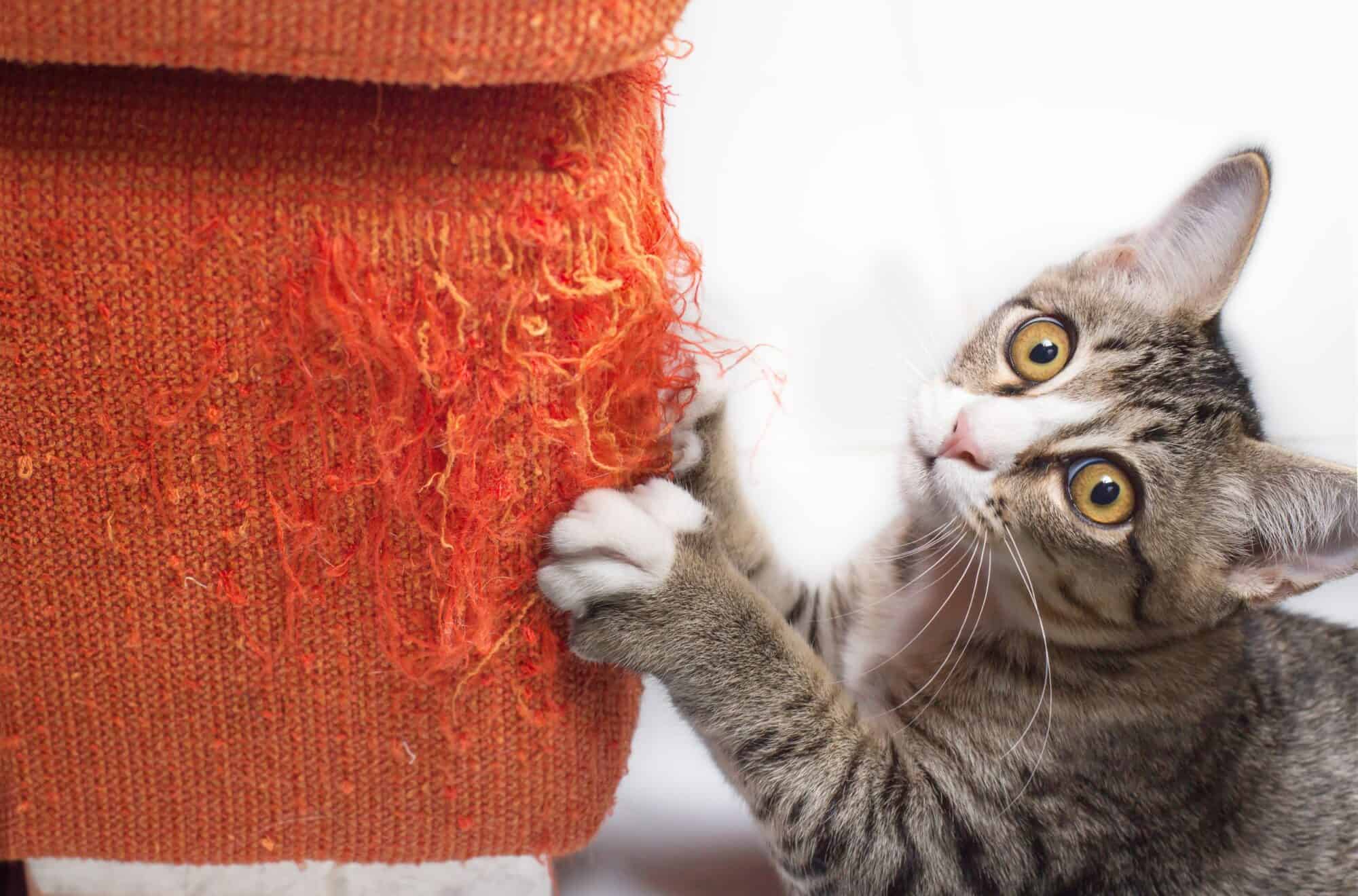Are My Cat’s Claws Too Long?

Cat’s claws help them catch prey, climb, and balance. They also help your cat defend himself against enemy combatants—sometimes real, such as dogs, cats, and other animals—sometimes imagined when your cat is being playful.
When nails are too long, they may curl and cut into your pet’s pads, elevating the risk for infection. Long nails can snag on carpet and fabrics and may tear the nail when your pet tries to free himself. Your cat’s ability to retract its claws can be affected too. Luckily, the team at Animal Medical Hospital & Urgent Care is here to help cat owners understand when their feline family member’s nails may be too long, and how to help.
Keep Em’ Short
If your cat’s claws are beginning to curl, it is an indication that they are too long. Natural trimming occurs when animals are in regular contact with hard surfaces such as concrete or road pavement. Most indoor cats don’t take long walks that are lengthy enough to keep their claws short. Outdoor cats, however, are more likely to trim their nails on tree trunks, wooden fence posts, or other textured surfaces.
Will Scratching Posts Help To Trim My Cat’s Nails?
Absolutely! Your cat will instinctively scratch, not just to keep their nails trimmed but to strengthen the muscles that allow them to retract their claws. You can train your kitten or your cat to use a scratching post and discourage them from scratching on furniture, drapes, and carpets.
What makes a scratching post attractive to your cat?
- Texture: Cats like to tear into a rough surface. It’s how they shed the old nail coverings and wear down their nails. The backside of a carpet swatch is much more attractive and safer for your cat. Remember, if your cat’s nails are too long, they could get caught in the loops of carpet fabric.
- Sturdiness: Outdoor cats will claw objects they can put some energy behind, like trees or fence posts. Your cat wants a durable, stationery, unmovable object with enough height so he can get a good scratch on.
- Enticements: for kittens, this can include mobiles for playing, and for older cats, add a bit of catnip.
- Placement: Try putting a scratching post in one of your cat’s favorite spots in the room.
- Encouragement: Training your cat to use a scratching post can be helped with lots of encouragement. Don’t scold your cat if they are scratching on some other surface. Encourage them with words, move them if you have to, and offer treats. That way, your pet knows that it is okay to keep scratching, and they’ll win your favor if they scratch on the post and not the couch!
Should I Trim My Cat’s Nails?
If you can’t get your cat to wear down their nails by scratching, then it’s time to learn how to trim their nails. A cat that is not trained to tolerate nail trims should be taken to our groomers at Animal Medical Hospital every ten days or so as recommended.
Ask us about proper nail trim techniques for home care. Before you clip, inspect your cat’s feet and toes for indications that he needs to see us right away. Apply light pressure on the pad to extend your cat’s claws to check for:
- Inflammation or redness
- Bleeding or dried blood
- Discharge or mucus
- Embedded ticks
We Are Here For You and Your Pets
Please call us with any questions you may have about your cat’s health care needs. You can easily schedule an appointment by phone at (704) 334-4684 or online. The staff and veterinarians at Animal Medical Hospital & Urgent Care offer a wide range of services to help keep your pets happy and healthy throughout their lives.
